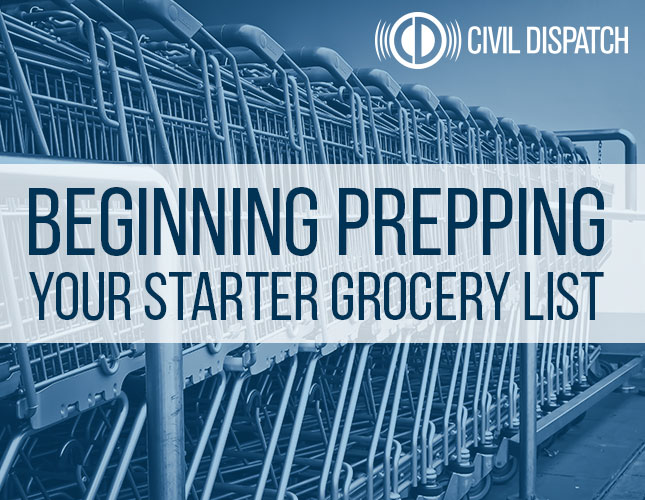
Prepping for natural disasters, local emergencies, and power outages can be daunting in the beginning, but taking small steps on a weekly basis can help with your peace of mind and is an important piece of your family’s disaster preparedness plan.
Today, we’re going to tackle a two-week food supply to begin…
When you’re starting your grocery list, it’s important to keep these things in mind:
- How many people are you going to be preparing meals for?
- What are their favorite meals (because disasters are NOT the time to start experimenting with what they’ll eat)?
- Are these foods convenient?
- Are these foods easy to prepare? (Keep in mind what methods you will have to cook, in the case of an emergency.)
- Are these foods long-term storage foods?
First and foremost, because you’ve read in almost every one of our blog posts, plan on water. Each person should have 1 gallon of water per day. Plan your storage accordingly. A great investment may also be a reliable water filter.
So what items make a great starter list that you can work from, based on your family’s needs? When you’re looking at a two-week supply, plan on each item here for each person in your family.
- 1 jar of peanut butter
- 2 cans of juice
- 2 cans of meat
- 2 cans of soup or stew
- 3 non-perishable items such as saltine crackers, graham crackers, etc.
- 1 box of cold cereal
- One box of quick oats
- 1 jar of applesauce
- 2 cans of fruits or vegetables
- Protein powder
- “Just-add-water meals” such as Ramen noodles, Hamburger Helper, or other boxed foods
- Drink mixes such as tea, Tang, or Kool-Aid
- Can opener (possibly a few of these, if you can stock up at your local dollar store!)
- Baby supplies (formula / baby food / etc.) if you have a little one in your home
- Protein/calorie drinks
Additionally, if you have a furry family member, it’s a good idea to stock up on a two-week supply of their preferred dry food also!
BONUS TIP: If you have room in your budget, it’s also great to stock up on items such as these (especially handy if you’re planning on a water storage - you don’t know if you’ll be able to clean things off):
- Styrofoam / paper plates
- Paper towels & napkins
- Plastic silverware
- Baby wipes
- Disinfecting wipes
- Plastic cups
- Toilet paper
Want to keep reading about how to prepare your family for emergencies and disasters? We highly recommend Tess Pennington’s book, The Prepper’s Blueprint: The Step-by-Step Guide to Help You Through Any Disaster.